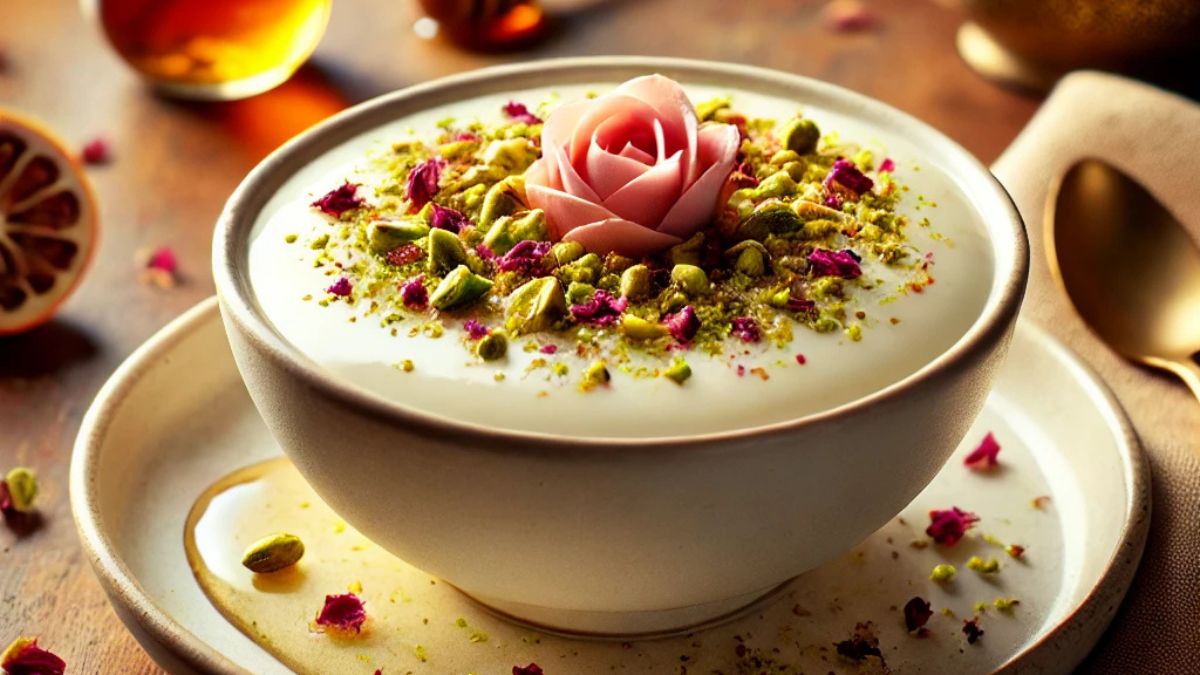Muhalabieh is more than just a delicious Middle Eastern dessert; it holds deep cultural significance in Arab cuisine. This creamy, fragrant pudding has been a staple in Middle Eastern households for centuries. But what is the cultural significance of muhalabieh beyond its delightful taste? This article explores its historical roots, role in traditions, and impact on modern culinary trends.
A Dessert with Deep Historical Roots
Muhalabieh traces its origins to the early Islamic period. According to historians, the dish was named after Al-Muhallab ibn Abi Sufra, a 7th-century Arab general who reportedly introduced it to his people. The dessert soon spread across the Middle East and became a symbol of hospitality and celebration.
Throughout history, muhalabieh evolved with regional influences. Persians, Turks, and Levantine cultures each added their unique touch, incorporating ingredients like rose water, orange blossom, and pistachios. Today, variations of the dish exist from Morocco to Iran, each reflecting local flavors and traditions.
Muhalabieh in Religious and Social Gatherings
One of the key aspects of the cultural significance of muhalabieh is its role in religious festivities. During Ramadan, families prepare this light and nourishing dessert to break their fast. Its simplicity and ease of digestion make it a preferred choice after a long day of fasting.
Muhalabieh is also served at weddings, Eid celebrations, and family gatherings. In many Arab households, guests are welcomed with traditional sweets, and this pudding is often among the offerings. It symbolizes generosity and the warmth of hospitality, values deeply rooted in Middle Eastern culture.
Symbol of Comfort and Healing
Beyond celebrations, muhalabieh has long been associated with comfort and healing. Many mothers prepare it for children as a soothing dessert, believing it helps with digestion. Its light texture and nutritious ingredients make it a favored dish for people recovering from illness.
In some cultures, muhalabieh is also a nostalgic dish, reminding people of childhood and family traditions. The preparation process, often passed down through generations, strengthens family bonds and keeps culinary heritage alive.
Modern Influence and Global Popularity
While deeply rooted in Middle Eastern traditions, muhalabieh has gained global recognition. Chefs worldwide have incorporated it into fusion cuisine, adding exotic toppings like saffron, coconut, and caramel. Restaurants in Europe and the U.S. now feature this dessert on their menus, introducing it to new audiences.
A study by the Middle Eastern Culinary Institute found that Middle Eastern desserts, including muhalabieh, have seen a 35% increase in popularity in international markets over the past decade. This growing interest highlights the cultural appreciation for traditional sweets beyond their country of origin.
Culinary and Nutritional Value
Muhalabieh is not just culturally significant but also valued for its simplicity and health benefits. Made from milk, sugar, and cornstarch, it provides essential nutrients like calcium and protein. The addition of nuts and spices enhances both flavor and nutritional value.
Unlike heavy, sugar-laden desserts, muhalabieh offers a balanced sweetness. This makes it an ideal choice for those looking for a light yet satisfying treat. Its versatility allows it to be adapted for different dietary needs, including vegan and gluten-free versions.
Preserving Tradition in a Changing World
As modernization influences food culture, preserving traditional dishes like muhalabieh becomes essential. Many chefs and food historians advocate for keeping these recipes alive through storytelling and documentation. Social media has also played a role in sharing authentic recipes, ensuring younger generations stay connected to their culinary heritage.
In some countries, food festivals celebrate traditional dishes, allowing locals and tourists to experience the rich flavors of Middle Eastern cuisine. Through these efforts, the legacy of muhalabieh continues to thrive
So, what is the cultural significance of muhalabieh? This dessert represents more than just a sweet treat—it is a symbol of history, hospitality, and tradition. From Ramadan tables to wedding feasts, muhalabieh has maintained its place in Middle Eastern culture for centuries. As it gains global popularity, its rich heritage remains intact, bridging generations and cultures through the love of food.
Whether enjoyed in a traditional setting or with a modern twist, muhalabieh continues to be a cherished part of Middle Eastern cuisine, proving that some traditions never fade.











